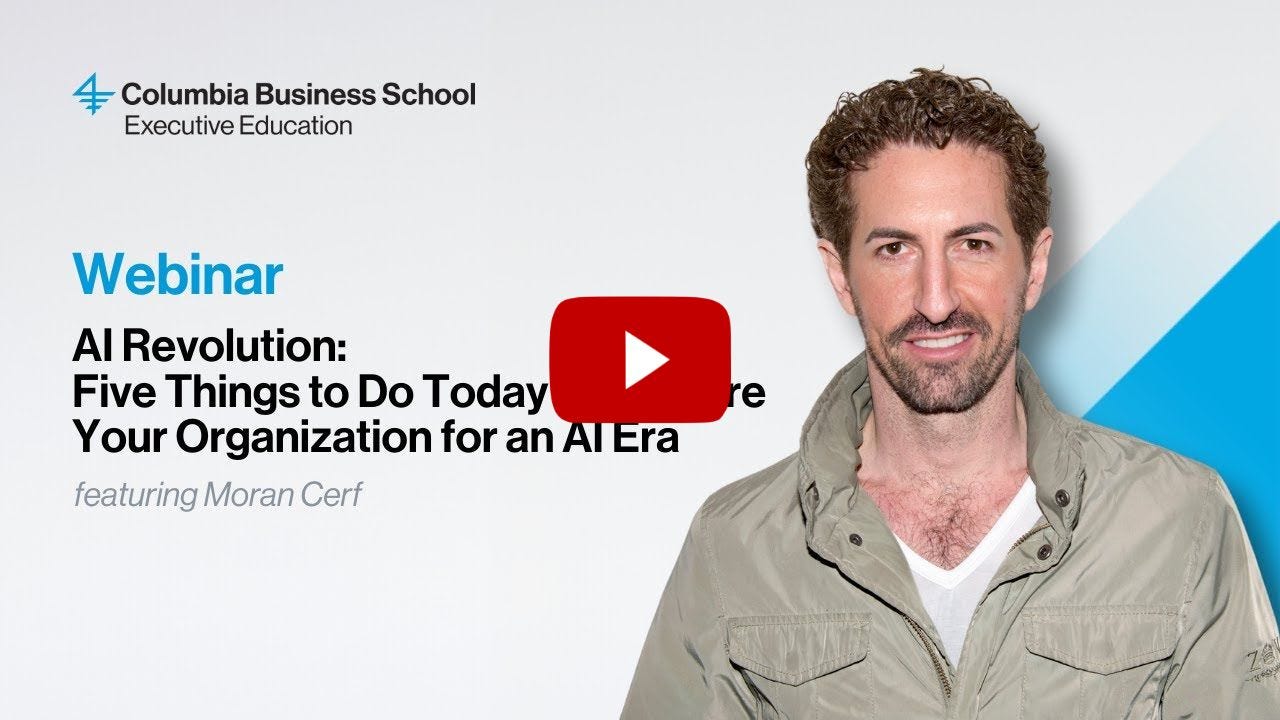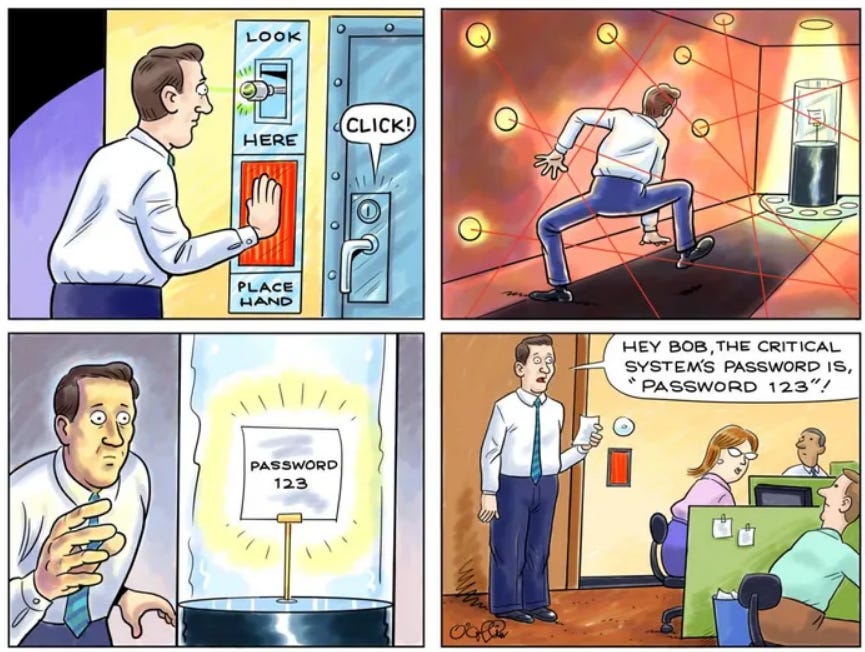🤖 What does Stanford AI Index Say?
In Today's Siam Sixers
🤖 Top Findings from Stanford’s annual AI Index report
🎥 Video: Five Things to Do Today to Prepare Your Organization for an AI Era
🎧 Podcast: Leveraging original research as a content marketing asset
💡 Essential Reading for Product Teams and Leaders
🔒 Ransomware Teaches UnitedHealth a $1 Billion Lesson on Cybersecurity
🚀 Humans… the weakest link in cybersecurity
1️⃣ Top Findings from Stanford’s annual AI Index report
Ten years ago, AI was a toddler struggling with basic tasks. Now? It's acing benchmarks and crushing at tasks that used to stump even the smartest humans.
Stanford recently released its 2024 AI Index Report which unpacks this mind-blowing progress, along with the worries and investments shaping the exciting (and maybe a little scary) future of AI.
🧠AI is getting smarter, faster. New AI systems can now generate text, translate languages, and understand images – all at human-level or better. This is a dramatic shift from just a decade ago, when AI struggled with basic tasks.
💸The money's flowing. Businesses are pouring cash into AI, especially generative AI (think text and image creation). Investment jumped from $3 billion to a whopping $25 billion in just one year.
🤖Robots get a brain boost. Researchers are combining powerful AI with robotics, paving the way for smarter, more adaptable robots in the real world.
📜Regulation on the rise. Governments are scrambling to keep pace with AI's rapid development. We're seeing a surge in AI-related regulations and policy discussions.
😬Public getting nervous. While AI advancements are impressive, the public is becoming increasingly anxious about its impact.
💰The cost of genius. Training these super-smart AI models is expensive – some costing over $100 million!
🌍America takes the lead. The US dominates AI research and investment, with China as its closest competitor (though China leads in robot installations and holds the most AI patents).
🚀The future is AI (but with a side of caution). AI is rapidly transforming our world, and this report highlights the need for responsible development and public education to ensure AI benefits everyone.
2️⃣Video: Five Things to Do Today to Prepare Your Organization for an AI Era
In a time when AI is breaking boundaries and becoming crucial for all kinds of businesses, integrating it isn't just a smart move, it's necessary to survive and grow.
In this video, Moran Cerf talks about the complexities of AI integration and adoption, highlighting actionable strategies to not only prepare but also thrive in the AI era.
Moran Cerf is the academic director at Columbia Business School Executive Education and a leading voice in AI adoption and implementation.
3️⃣Podcast: Leveraging original research as a content marketing asset
Content marketing has evolved from a "nice to have" versus a "must have".
In this podcast Becky Lawlor, the founder of Redpoint Content which provides content marketing services to tech companies, shares why original research is consistently one of the highest-performing content marketing assets,
If you want to learn how to identify, create, and publish content that increases brand awareness and drives demand creation for your tech business, this podcast is a great listen!!
4️⃣Essential Reading for Product Teams and Leaders
Here are the latest articles published in Siam Computing and ProdWrks that I feel will be useful for product teams and leaders.
🚀How Did Responsive.io (formerly RFPIO) become Coimbatore’s Biggest SaaS Startup?
👩⚕️How Data-Driven AI Models are Powering the Shift to Value-Based Healthcare
👷♂️WorkIndia Brings Visibility to Blue Collar Recruitment. Can it Solve India’s Job Discovery Problem?
💊From Fee-for-Service to Value-Based Care: A Founder’s Guide to Opportunities in Healthcare
💡Deriving Wisdom from Data: A Guide for Startups with Digital Products
🕶️Abhishek Tomar’s AjnaLens Is Breaking Barriers to XR Adoption in India
🏥The Role of IoMTs in Enhancing Patient Experience in Modern Hospitals
🚀Six Ways Hospitals Use Technology to Enhance Patient Experience and Healthcare Delivery
5️⃣Ransomware Teaches UnitedHealth a $1 Billion Lesson on Cybersecurity
Imagine a scenario where a cyberattack throws the Indian healthcare system into chaos, disrupting patient care and costing billions. That's the harsh reality faced by UnitedHealth, a major US health insurance company, after a ransomware attack on its subsidiary, Change Healthcare, a key player in medical billing.
This incident serves as a $1 billion wake-up call for healthcare leaders, highlighting the critical need for robust cybersecurity strategies.
The Cost of Neglect: The attack on Change Healthcare crippled billing systems for weeks, impacting doctors, clinics, and patients. UnitedHealth initially reported $872 million in losses, but the final figure could reach $1 billion.
This highlights the devastating financial impact of cyberattacks, far exceeding the cost of preventative measures.
Beyond the Numbers: The true cost goes beyond financials. Disrupted billing delays patient care, creates frustration for providers, and erodes trust in the healthcare system. This incident underscores the critical role of service providers in ensuring smooth healthcare operations.
Security Concerns with Mergers: The UnitedHealth/Change Healthcare merger, challenged by the Department of Justice due to antitrust concerns, is now under renewed scrutiny. Lawmakers are questioning whether such large mergers create an even bigger target for attackers, impacting a wider range of healthcare entities.
Lessons for Healthcare Leaders:
Cybersecurity is not a cost center. Invest in data protection technologies, disaster recovery plans, and regular security audits. These are crucial for protecting sensitive patient information and ensuring business continuity.
Scrutinize M&A cybersecurity posture. Evaluate the potential cyber risks associated with mergers and acquisitions, considering the combined attack surface and impact on the healthcare ecosystem.
Learn from past mistakes. UnitedHealth reportedly paid a ransom, a strategy often discouraged by cybersecurity experts. Explore alternative incident response strategies and invest in robust defense systems.
The Change Healthcare attack underscores the vulnerability of the healthcare infrastructure. It's a wake-up call for healthcare leaders to prioritize cybersecurity, not just for financial reasons, but to ensure patient safety, trust, and the smooth functioning of the healthcare system.
6️⃣Humans… The weakest link in cybersecurity
I hope you enjoyed this week's curated stories and resources. Check your inbox again next week, or read previous editions of Siam Sixers for more insights. To get instant updates, connect with me on LinkedIn.
Cheers!
Khuze Siam
Founder: Siam Computing & ProdWrks







